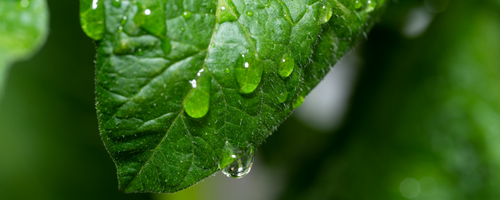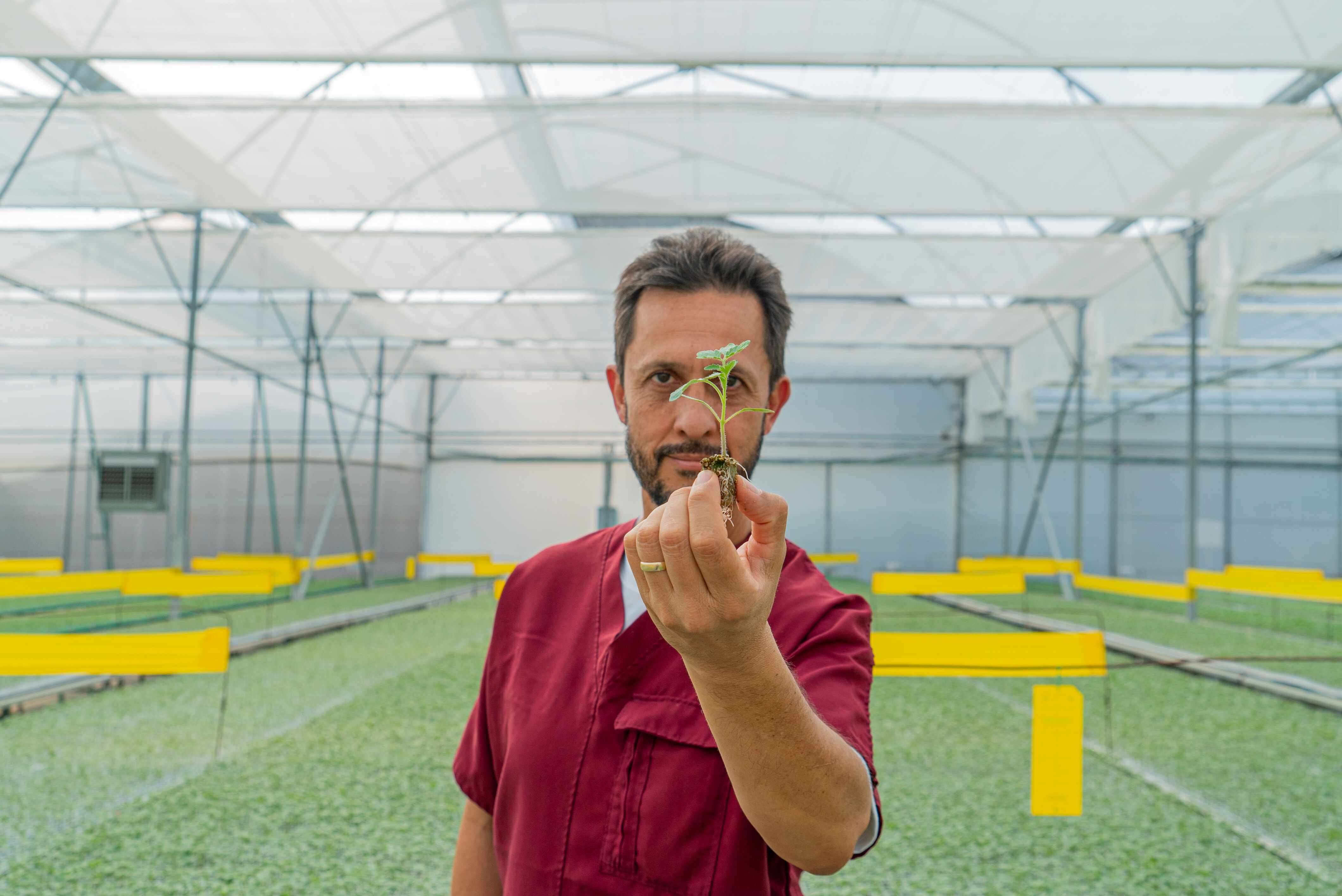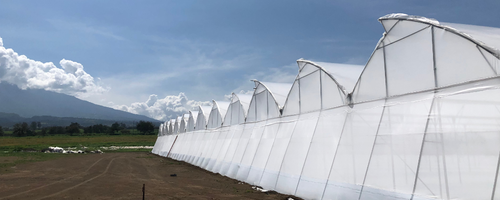
When high temperatures and high humidity wakes up an ancient fungal foe

This month, just as we were planning to take a look at humidity issues, an email dropped.
Roger González, of Technocampo SA in Costa Rica was getting in touch. He consults in hydroponics and greenhouse production, but also grows tomatoes and chilis, and he wrote in to the blog to ask us how he could reduce Botrytis and Phytophthora on a new dense foliage light-loving crop.
He said that conditions locally were quite different to the favorable climate in Colombia where he had spent some time being trained on the new crop.
“Here in Costa Rica,” he writes, “most arable areas have to deal with temperatures of up to 32 °C (89 °F) by day and 24 °C (75 °F) at night. For this crop, which is medicinal, we can’t use chemicals during the flowering stage,” he adds.
Roger says managing the temperature and the relative humidity on a crop that needs a lot of light is key.
I can absolutely see where he is coming from. As you increase the light, the crop transpires more creating more humidity. This is counterproductive as the leaves are trying to cool off, but within the greenhouse it is creating a more active environment for diseases to develop.
It can wake a greenhouse grower’s foe – fungus.
But it’s not just that fungal infection can move in. Once the relative humidity is high right around the leaf, the plant will no longer be able to maintain transpiration.
Now there’s a problematic combination of factors.
There is moisture lurking in still air around the foliage and flowers. But at the same time the slowing transpiration means that the plant is not able to send the calcium that help it maintain its resilience.
It’s a vicious cycle you need to find a way out of.
When I read Roger’s letter, it reminded me of a situation faced by a grower in Michigan. I know that’s not a hot climate, but this grower had installed a LOT of lighting and it was increasing the temperature and humidity.
They were up against a similar disease burden, with Botrytis and Aspergillus. They’re all fungal diseases.
After the visit and them trying out our suggestions in some growing compartments they told me they had reduced disease pressure by 90%. And keep in mind, this was not a trial, this was the grower sharing their experience.
What they did was to get the air moving. The problem was that in that environment where it was hot and humid there was a lot of stagnant air just standing around in the canopy.
Improving air flow prevents the moisture just sitting there around the leaves, and prevents disease developing in the same way.
In the case of the Michigan grower, we recommended them to use vertical fans to get the air moving around nicely. That’s something Svensson provides and they went with our product, ClimaFlow, but the principle of moving air vertically into the canopy is the important thing.
Another strategy, depending on the greenhouse set-up you have, is to increase ventilation by removing the sidewalls and replacing them with an insect net with fairly course holes.
That will get natural ventilation through the greenhouse.
Many growers use Svensson’s insect net, Xsect, as a permanent wall, and then a screen like Solarwoven as a retractable wall that call be brought down on occasions when you want to close off the greenhouse.
![IMG_1772[1]](https://knowledge.ludvigsvensson.com/hs-fs/hubfs/IMG_1772%5B1%5D.jpg?width=1200&length=1200&name=IMG_1772%5B1%5D.jpg)
.jpeg?width=1200&length=1200&name=inside%20green%20house%20almost%20finished%20(1).jpeg)
When growers work with their crop using insights gained in the Plant Empowerment movement, the connection between elevated humidity and calcium transportation becomes easier to understand.
I guess I’m curious if you’ve come across Plant Empowerment, Roger? Either way, getting more air movement and ventilation into the greenhouse will I think help with this new crop you’re growing in what sounds like a challenging environment.
By the way, we’re excited to announce that our new guide, Three keys to improved greenhouse humidity, is now available! Be sure to check it out to learn valuable insights on managing humidity in your greenhouse.
Make sure you hit follow to stay up to date with the latest stories and resources from Svensson.

Related articles

Extreme temperature: After three 40°C+ heatwaves it’s time to future-proof your business, says Pharis Rico
Since Svensson consultants started this blog together, I’ve been looking for the right time to talk warmzone growing to Pharis Rico at Plantanova...

Excluding thrips from peppers in hot weather: A case study one year on
It’s been a little more than a year now since we did our work with Gomalor in Tuxpan, Jalisco, Mexico. The results of the trial – which were..



